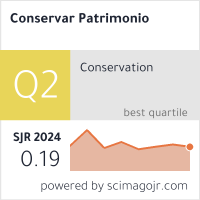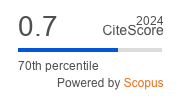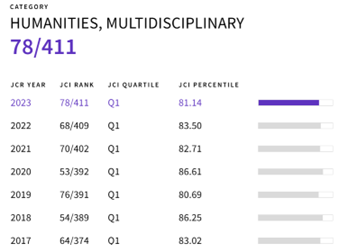Implementation of HBIM for the management, conservation and dissemination of a protected 20th-century heritage building: the Real Club Náutico of Donostia-San Sebastián
DOI:
https://doi.org/10.14568/cp42088Keywords:
Royal Nautical Club of San Sebastián (RCNSS), HBIM, Modern Movement, Heritage Architecture, Conservation, ReconstructionAbstract
The Real Club Náutico of San Sebastián (1929), designated a Cultural Heritage Site since 2001, stands as a landmark of the Modern Movement in Spain. However, its preservation faces challenges due to fragmented documentation and its unique status as a 20th-century heritage building in active use as a private club with public areas. This study presents a 3D HBIM (Historic Building Information Modelling) approach, offering a system for parameterising and integrating documentary, historical, and construction data to enhance the building’s management, conservation, and dissemination. The bibliographic compilation and classification, the organisation of construction elements by historical-constructive phases, and the identification of current pathological conditions enable the building’s historical traceability and facilitate information exchange among stakeholders. Furthermore, it supports informed decision-making and opens new avenues for the promotion and appreciation of the property, thereby contributing to its long-term preservation.
Downloads
References
1. García Moreno, J.; León Cascante, I.; Sagarna Aranburu, M., ‘Procesos para la creación del modelo HBIM de un edificio patrimonial protegido del siglo XX. El Real Club Náutico de Donostia-San Sebastián’, EGE-Expresión Gráfica en la Edificación 21 (2024) 4-26, https://doi.org/10.4995/ege.2024.22199.
2. Urkia Etxabe, J. M., RCNSS, 125 años en la mar, 1896-2021: historia del Real Club Náutico de San Sebastián_COMPLETO, Real Club Náutico San Sebastián, San Sebastián (2021).
3. Martínez, J. J. P.; Laka, M. S.; Cascante, I. L., ‘El proceso experimental de composición del color en el Real Club Náutico de San Sebastián, edificio polícromo’, EGA : revista de expresión gráfica arquitectónica 26(42) (2021) 168-179, https://doi.org/10.4995/ega.2021.13240.
4. Ruano Hernansanz, M. Á., ‘El ‘yate’ elevado a ‘paquebote’. Historia del Real Club Náutico de San Sebastián más allá del mito ‘lecorbuseriano’, 1905-1929’, Cuadernos de Proyectos Arquitectónicos 11 (2021) 32-45, https://doi.org/10.20868/cpa.2021.11.4823.
5. Sanz Esquide, J. Á., Real Club Náutico de San Sebastián, 1928-1929 José Manuel Aizpúrua y Joaquín Labayen, Medusa - Colegio de Arquitectos de Almería, Almería (1995).
6. Medina Murua, J. Á., José Manuel Aizpúrua y Joaquín Labayen, 1a ed., COAVN Delegación de Gipuzkoa, San Sebastián (2011).
7. Medina Murua, J. A., ‘Un barco de Hormigón. El día que Le Corbusier visitó San Sebastián’, Lars: cultura y ciudad 8 (2007) 49-53.
8. Murphy, M.; McGovern, E.; Pavia, S., ‘Historic Building Information Modelling – Adding intelligence to laser and image based surveys of European classical architecture’, ISPRS Journal of Photogrammetry and Remote Sensing 76 (2013) 89-102, https://doi.org/10.1016/j.isprsjprs.2012.11.006.
9. Baik, A., ‘From point cloud to Jeddah Heritage BIM Nasif Historical House – case study’, Digital Applications in Archaeology and Cultural Heritage 4 (2017) 1-18, https://doi.org/10.1016/j.daach.2017.02.001.
10. Jordan-Palomar, I.; Tzortzopoulos, P.; García-Valldecabres, J.; Pellicer, E., ‘Protocol to manage heritage-building interventions using Heritage Building Information Modelling (HBIM) ’, Sustainability 10(4) (2018) 908, https://doi.org/10.3390/su10040908.
11. Hossain, M. A.; Yeoh, J. K. W., ‘BIM for existing buildings: potential opportunities and barriers’, IOP Conference Series: Materials Science and Engineering 371 (2018) 012051, https://doi.org/10.1088/1757-899X/371/1/012051.
12. Castellano-Román, M.; Pinto-Puerto, F., ‘Dimensions and levels of knowledge in Heritage Building Information Modelling, HBIM: the model of the Charterhouse of Jerez (Cádiz, Spain) ’, Digital Applications in Archaeology and Cultural Heritage 14 (2019) e00110, https://doi.org/10.1016/j.daach.2019.e00110.
13. Liu, J.; Willkens, D. S.; Foreman, G., ‘An introduction to technological tools and process of Heritage Building Information Modeling (HBIM) ’, EGE-Expresión Gráfica en la Edificación 16 (2022) 50-65, https://doi.org/10.4995/ege.2022.17723.
14. Akın, Ş.; Gürsel Dino, İ.; Savaş Sargın, A., ‘Heritage building information modelling for the conservation of 20th century modernist architecture’, METU Journal of the Faculty of Architecture 39(1) (2022) 1-22, https://doi.org/10.4305/METU.JFA.2022.1.1.
15. Maietti, F.; Zattini, A., ‘Documentation, analysis and representation of modernistheritage through building information modeling’, The International Archives of the Photogrammetry, Remote Sensing and Spatial Information Sciences XLII-2/W15 (2019) 727-734, https://doi.org/10.5194/isprs-archives-XLII-2-W15-727-2019.
16. Fernandes Dionizio, R.; Murphy, M.; Dezen-Kempter, E., ‘Multi-scale documentation of modern Brazilian architecture: an HBIM-HGIS approach’, International Journal of Architectural Heritage April (2025) 1-18, https://doi.org/10.1080/15583058.2025.2492243.
17. Morganti, R.; Tosone, A.; Di Donato, D.; Abita, M., ‘HBIM and the 20th century steel building heritage – a procedure suitable for the construction history in Italy’, The International Archives of the Photogrammetry, Remote Sensing and Spatial Information Sciences XLII-2/W9 (2019) 515-522, https://doi.org/10.5194/isprs-archives-xlii-2-w9-515-2019.
18. Díaz Parrilla, S.; Sanchez Fernandéz, A. J.; Torre Cantero, J. L. D. L., ‘An approach to HBIM methodology applied to the conservation of altarpieces: two case studies in the Canary Islands’, Conservar Património 42 (2023) 81-87, https://doi.org/10.14568/cp27293.
19. Angulo-Fornos, R.; Castellano-Román, M.; Pinto-Puerto, F., ‘Estrategias de modelado patrimonial en HBIM, aplicación a la lectura estratigráfica del muro de fachada del cuadrante renacentista de la catedral de Sevilla’, Arqueología de la Arquitectura 18 (2021) e109, https://doi.org/10.3989/arq.arqt.2021.001.
20. Korro, J.; Valle-Melón, J. M.; Rodríguez Miranda, Á., ‘Documentary data collection: an initial step for information management in the conservation and restoration of cultural heritage’, Conservar Património 45 (2023) 21-35, https://doi.org/10.14568/cp27370.
21. Ivanov, K., ‘Digital three-dimensional architectural survey of traditional Bulgarian houses − Architectural BIM from point cloud survey data’, Conservar Património 36 (2021) 36-45, https://doi.org/10.14568/cp2019027.
22. Fernández, A. (coord.), BIM aplicado al Patrimonio Cultural. Documento 14. Guía de usuarios BIM, Building SMART Spain Chapter, s.l. (2018), https://www.researchgate.net/publication/330183791_BIM_aplicado_al_Patrimonio_Cultural_Documento_14_Guia_de_usuarios_BIM_Building_SMART_Spain_Chapter (acesso 2025-04-25).
23. Holmström, J.; Ketokivi, M.; Hameri, A., ‘Bridging practice and theory: a design science approach’, Decision Sciences 40(1) (2009) 65-87, https://doi.org/10.1111/j.1540-5915.2008.00221.x.
24. Takeda, H.; Veerkamp, P.; Yoshikawa, H., ‘Modeling Design Process’, AI Magazine 11(4) (1990) 37-48, https://doi.org/10.1609/aimag.v11i4.855.
25. Prieto Rodríguez, M. A.; March Cerdá, J. C., ‘Paso a paso en el diseño de un estudio mediante grupos focales’, Atención Primaria 29(6) (2002) 366-373, https://doi.org/10.1016/S0212-6567(02)70585-4.
26. Manžuch, Z., ‘Ethical issues in digitization of cultural heritage’, Journal of Contemporary Archival Studies 4 (2017) article 4, http://elischolar.library.yale.edu/jcas/vol4/iss2/4 (acesso 2025-07-05)
27. Rouhani, B., ‘Ethically digital: contested cultural heritage in digital context’, Studies in Digital Heritage 7(1) (2023) 1-16, https://doi.org/10.14434/sdh.v7i1.35741.
28. Wagner, A.; De Clippele, M.-S., ‘Safeguarding cultural heritage in the digital era – a critical challenge’, International Journal for the Semiotics of Law - Revue internationale de Sémiotique juridique 36(5) (2023) 1915-1923, https://doi.org/10.1007/s11196-023-10040-z.
29. es.BIM, Guía para la elaboración de un PEB (2018), https://cibim.mitma.es/recursos-cibim/otros-recursos (acesso 2025-05-02).
30. es.BIM, Generación de Modelos: Guía de Modelado de Arquitectura (2018), https://cibim.mitma.es/recursos-cibim/otros-recursos (acesso 2025-05-02).
31. Pedro Busto Projectia S.L.P.U., Manual para la introducción de la metodología BIM aplicado a la intervención en Bienes Inmuebles declarados BIC, Ministerio de Cultura y Deporte, Pamplona (2021), https://habitatge.gva.es/es/web/arquitectura/bim/recursos/-/asset_publisher/2QECYOWFrAZb/content/manual-bim-en-inmuebles-declarados-bic (acesso 2025-05-03).
32. Brumana, R.; Stanga, C.; Banfi, F., ‘Models and scales for quality control: toward the definition of specifications (GOA-LOG) for the generation and re-use of HBIM object libraries in a Common Data Environment’, Applied Geomatics 14(S1) (2022) 151-179, https://doi.org/10.1007/s12518-020-00351-2.
33. Da Costa, F. C. A.; Xavier Junior, E. D.; Borda, A. D. S. A., ‘A doo to access HBIM: didactic aspects to advance in the level of detail (LoD), geometry (LOG) and information (LOI) ’, in Blucher Design Proceedings 12 (2024) 206-217, https://doi.org/10.5151/sigradi2023-358.
34. Brumana, R.; Della Torre, S.; Previtali, M.; Barazzetti, L.; Cantini, L.; Oreni, D.; Banfi, F., ‘Generative HBIM modelling to embody complexity (LOD, LOG, LOA, LOI): surveying, preservation, site intervention—the Basilica di Collemaggio (L’Aquila) ’, Applied Geomatics 10(4) (2018) 545-567, https://doi.org/10.1007/s12518-018-0233-3.
35. Sagarna, M.; Otaduy, J. P.; Mora, F.; Leon, I., ‘Analysis of the state of building conservation through study of damage and its evolution with the state of conservation assessment BIM Model (SCABIM) ’, Applied Sciences 12(14) (2022) 7259, https://doi.org/10.3390/app12147259.

Downloads
Published
How to Cite
Issue
Section
Categories
License
This work is distributed under a Creative Commons Attribution License (CC BY-NC-ND 4.0) which permits use, distribution, and reproduction in any medium following no commercial or derivatives, provided the original author and source are credited.
Copyright remains with the authors.






